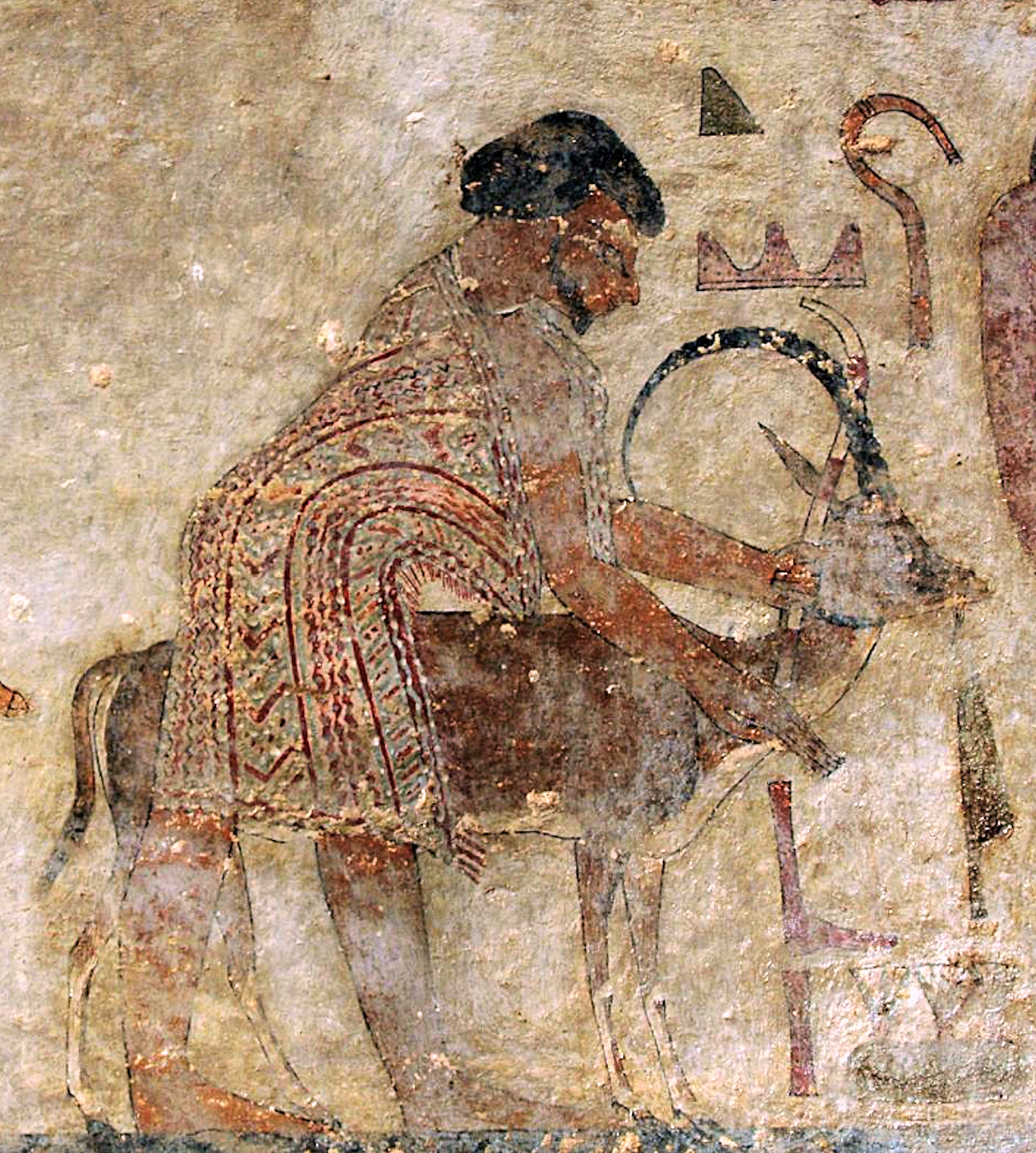:focal(467x291:468x292)/https://tf-cmsv2-smithsonianmag-media.s3.amazonaws.com/filer/29/1a/291a0a7e-c8d5-4bc7-8a39-0cb0e7934a95/2020_july17_hyksos.jpg)
“Wall art dated to around 1900 B.C. shows visitors to Egypt wearing colorful robes distinct from the white clothing worn by locals”


Popular lore suggests the Hyksos, a mysterious group of foreign invaders, conquered the Nile Delta around 1638 B.C. and remained in power until 1530 B.C. But written records of the dynasty are scarce, and modern archaeologists have found few material signs of the ancient military campaign.
Now, new research lends weight to an alternative theory on the Hyksos’ origins. As Colin Barras reports for Science magazine, chemical analysis of skeletons found at the Hyksos capital of Avaris indicates that people from the Levant—an area encompassing the countries surrounding the eastern Mediterranean—immigrated to Egypt centuries before the takeover. The Hyksos dynasty, then, was likely the result of an immigrant uprising, not a hostile outside invasion.
The findings, published in the journal PLOS One, center on variations in strontium isotopes present in 75 skeletons’ tooth enamel. Strontium, a harmless metal found in water, soil and rocks, enters the body primarily through food. Comparing isotope ratios found in enamel, which forms between ages 3 and 8, with those present in a specific region, can help scientists determine whether an individual grew up there, as levels “vary from place to place,” writes Ariel David for Haaretz.
Around half of the skeletons were buried in the 350 years before the Hyksos’ takeover; the rest were interred during the dynasty’s reign. Per the paper, the researchers found that 24 of the pre-1638 skeletons were foreign-born, pointing toward significant immigration prior to the supposed invasion.
“This was clearly an international city,” lead author Chris Stantis, an archaeologist at Bournemouth University in England, told Science News’ Bruce Bower last April, when she and co-author Holger Schutkowski presented the research at a conference.
/https://tf-cmsv2-smithsonianmag-media.s3.amazonaws.com/filer/ca/9e/ca9eee7f-46f5-42e3-b92e-091711f2558f/236966_web.jpg)
A seal amulet bearing the name of the Hyksos pharaoh Apophis

Archaeological finds further testify to the Hyksos culture’s diversity: Ancient artwork depicts members wearing colorful robes distinct from Egypt’s traditional white clothing, while records indicate that they had names similar to people from southwest Asia, according to Science.
Tombs unearthed at Avaris also offer evidence of “non-Egyptian burial customs,” explains Stantis to Live Science’s Laura Geggel. Males were buried “with bronze weaponry in constructed tombs without scarabs or other protective amulets,” and “[t]he most elite had equids of some sort (potentially donkeys) buried outside the tombs, often in pairs as though ready to pull a chariot.”
The archaeologist adds, “This is both a foreign characteristic of burial style, but also suggestive of someone [with] very high status.”
Chemical analysis revealed that many of the foreign-born people buried at Avaris were women. The researchers posit that local-born rulers married women from western Asia, possibly to cement alliances. Strontium levels found in the teeth of individuals raised outside of Egypt varied widely, suggesting people immigrated to the region from a range of places.
“It is fascinating to see corroborating evidence from a new direction which demonstrates that men from the Levant did not settle at Tell el-Dab’a in large numbers at the start of the Hyksos period—which is what one might expect to see in the wake of a huge military invasion,” Deborah Sweeney, an Egyptologist at Tel Aviv University who was not involved in the study, tells Haaretz.
The researchers theorize that members of Avaris’ immigrant community rose to power during the unrest of the Second Intermediary Period. After ruling northern Egypt for more than 100 years, they were deposed by the returning pharaohs. Per Science, historians have previously speculated that when the pharaohs reclaimed the territory, they exiled the Hyksos rulers to southwest Asia—a move that may have inspired the biblical story of Exodus.
Mentions of the Hyksos’ rule are scarce. One of the earliest sources describing the dynasty dates to the third century B.C., when a priest named Manetho penned a comprehensive history of history of Egypt. Manetho’s work was later transcribed in fragments by another historian, Josephus. Written long after the Hyksos’ actual reign, the tome claims that the invaders brought an army “sweeping in from the northeast and conquering the northeastern Nile Delta,” according to the paper.
Manetho’s history of the Hyksos may have acted as propaganda that supported Egypt’s plan to invade the Levant under the expansionist New Kingdom.
“The Hyksos invasion was presented as a shame that had to be prevented from repeating itself by controlling these lands,” Daphna Ben-Tor, former curator of Egyptian archaeology at the Israel Museum in Jerusalem, tells Haaretz. “The Hyksos were the devil incarnate, while the Egyptian king was the savior of the world.”
source:smithsonianmag








